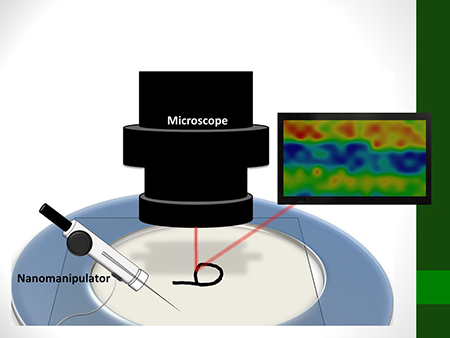Forensic Ink Analysis with DAPNe

Examining documents is significant, particularly in the field of forensics. Techniques most often used are gas chromatography mass spectrometry, high performance liquid chromatography, thin-layer chromatography, and capillary electrophoresis. These traditional techniques involve use of a micro-punch, removing ink-bearing fibers from the paper surface, or cutting the document into strips when analyzed. Destruction to the document for analysis is not ideal, especially when they derive from an ancient era or from forensic case studies. A non-destructive technique that keeps the document in its original form and is minimally invasive throughout the examination of questioned documents has been developed.
Direct analyte probe nanoextraction coupled to nanospray mass spectrometry (DAPNe-NSI-MS) is now an established technique that uses extremely small sample volumes, has high resolution, and low limits of detection. The procedure uses a direct extraction method, eliminating further sample preparation and saving analysis time. With the DAPNe technique, many different kinds of inks has been examined, including inks from the Middles Ages such as iron gall inks, India inks, and Japanese Sumi ink and modern inks like Pilot, BIC, and Sharpies. The DAPNe technique was able to differentiate each pen by identifying the inorganic and organic components of the ink in addition to tracking the process of oxidation.